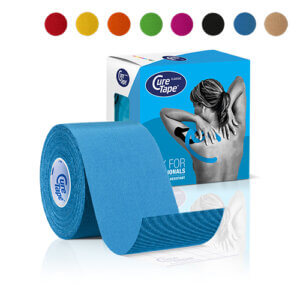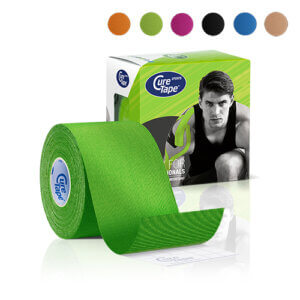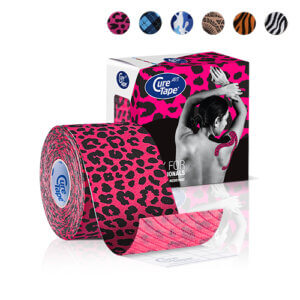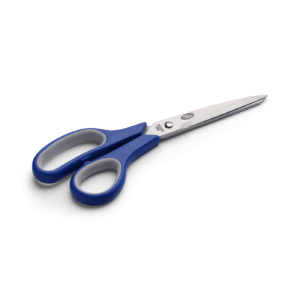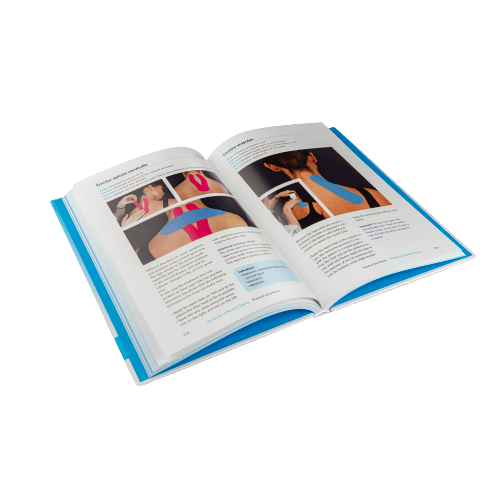Knee pain is one of the top 5 health problems that are treated successfully by therapists using kinesiology tape. The knee is a complicated and large joint that is prone to injuries and therefore knee complaints. This can be an acute complaint after a trauma, but also chronic knee complaints due to, for example, wear and tear. Approximately 6.5% of treatments by a professional practitioner are knee-related.
Within the Kinesiology Taping Concept there are various taping applications that can be used for different knee problems. These taping applications can also be applied in a preventive manner, to give the patient a safe and stable feeling during a sporting activity and can prevent further knee damage.
Get started with these items to tape your knee
Instructional video: Kinesiology Taping for knee complaints
Watch our instructional video to learn how to use kinesiology tape for knee pain relief. By following the demonstrations below, you’ll stimulate natural movement, crucial for the healing process. This video showcases three tape applications for comprehensive knee support. Depending on your specific needs, you can opt for a single method or combine two for tailored relief.
How to tape in case of pain around the kneecap
The cartilage under the kneecap can be damaged by joint injuries and / or overload. The result is pain in and around the kneecap and limitation of movement on the stretch side of the knee. The pain complaints often arise gradually because the kneecap does not run smoothly through the groove of the thigh. The symptoms can worsen in activities such as climbing stairs, running, cycling and squatting. Long-term sitting with a bent knee can also be painful (often patellofemoral pain syndrome).
Cause must often be sought in stall deviations of knee or ankle, or a disturbed effect of the muscles (shortened muscles, loss of strength). Intensive training on hard ground can also cause these complaints.
This taping application is recommended in the above knee problems:
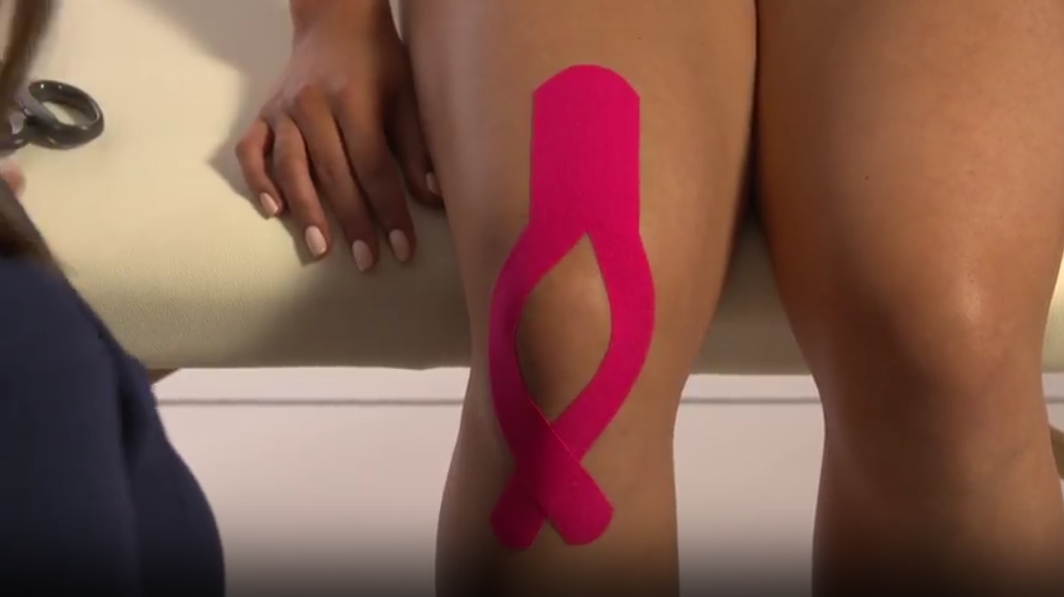
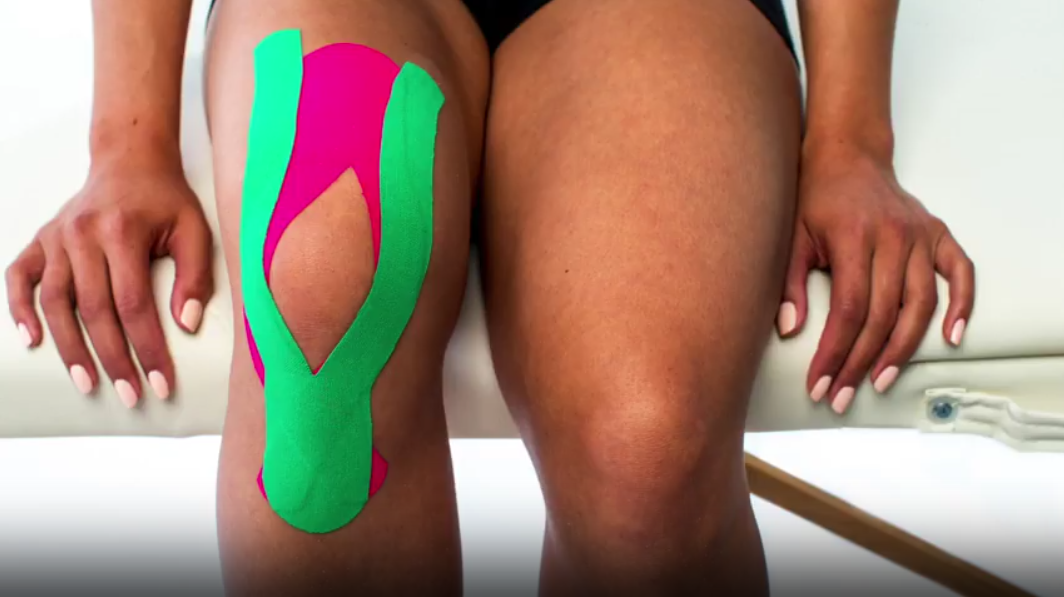
Instructions for professionals
- The patient sits or lies with a bent knee opposite the therapist.
- The base of the Y-tape is fixed without stretching about halfway on the quadriceps femoris.
- The tape is then applied with a slight stretch in the direction of the patella, with the splice placed around the edge of the patella and ends together without stretching on the patellar tendon.
- For additional stability and function improvement, a second Y-tape is applied.
- The base is applied to the tuberosity (the lumpy bone below the kneecap of the upper part of the lower leg) and the two strips follow the patellar border laterally and medially.
Instructions for self taping (non-professionals)
- Sit or lie down with your knee bent.
- The base of the Y-tape is gently placed about halfway up the thigh muscle.
- Apply the tape with a gentle pull towards the kneecap, positioning the split part around the edge of the kneecap. Finish by bringing the ends together without pulling on the tendon below the kneecap.
- To add more support and improve function, another Y-tape is used.
- Place the base of the tape on the bony lump below the kneecap on the upper part of the lower leg. Then, position the two strips along the edge of the kneecap, one on each side.
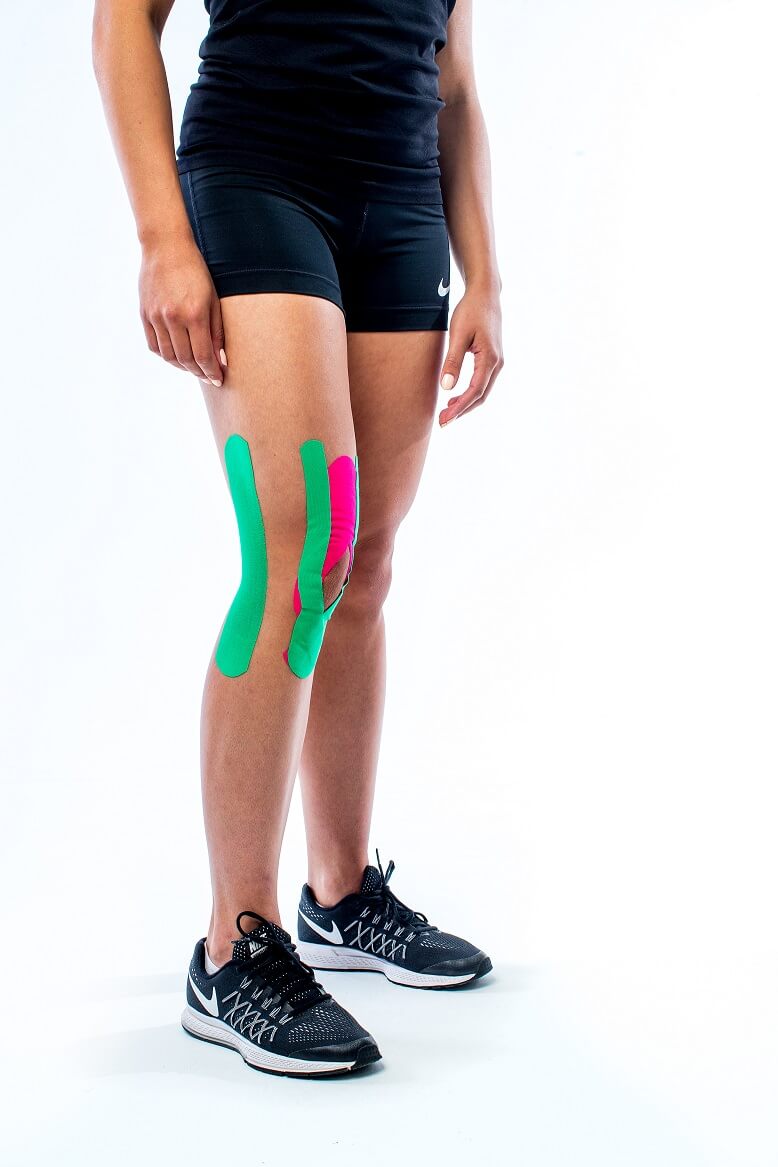
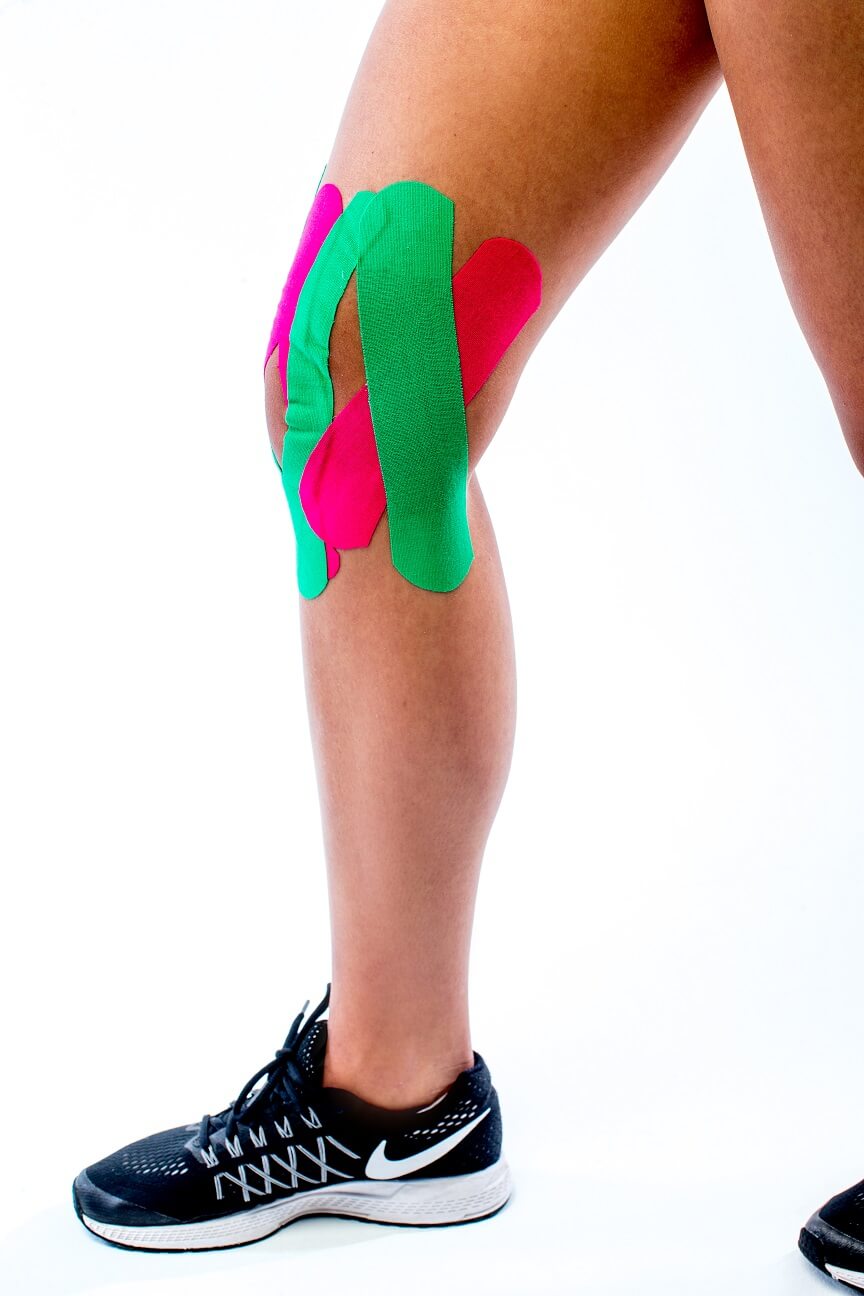
How to tape knee complaints
Knee osteoarthritis, instability, and strained or torn knee ligaments
Wear and tear in the knee is one of the most common forms of osteoarthritis. The knee is a complex joint that undergoes a lot of force. With osteoarthritis, the cartilage is affected, causing the bones to no longer slide smoothly and painlessly over each other. Wear and tear typically develop gradually with age, but cartilage damage can also occur due to a fracture, knee ligament damage, or a tear in the meniscus.
How to tape osteoarthritis, an unstable knee, or knee ligament injury:
Instructions for professionals
- In a neutral position, apply a single I-tape to the lateral side of the knee, starting from the center, with significant stretch, using the ligament technique.
- Since the ligament fibers cross lightly in the medial direction, use two strips for this side of the knee.
- With the knee slightly bent, apply the two strips crisscross with significant stretch using the ligament technique.
- Ensure that no stretch is applied to the anchors.
Instructions for self taping (non-professionals)
- Position the knee in a neutral postion (not bent/not straight)
- Place kinesiology tape on the side of the knee where it hurts, starting from the middle and pulling it tight like a rubber band.
- Since the inside of the knee has some crisscrossed tissue, use two pieces of tape for that part.
- Then, with the knee a little bit bent, put these two pieces of tape in a crisscross pattern, still pulling them tight.
- Make sure not to pull too hard on the parts of the tape that stick to the skin.
This method can make the knee feel more stable and may help ease pain.
How to tape for inflammation of the synovial capsule and fluid in the knee (Synovial Plica Syndrome)
A plica is a fold in the joint capsule that can become irritated and inflamed during certain activities. The pain is felt on the inside of the knee and worsens with bending and straightening. Knee effusion is a common knee complaint and is a symptom of various knee problems.
Within the Medical Taping Concept, there is a taping application that can be used for knee swelling or inflammation of the plica: Cut an X-tape. Apply the tape without stretch in the center of the knee crease. Then guide the strips with very little stretch in an X-shape towards the sides of the knee. The tape should not affect the range of motion.
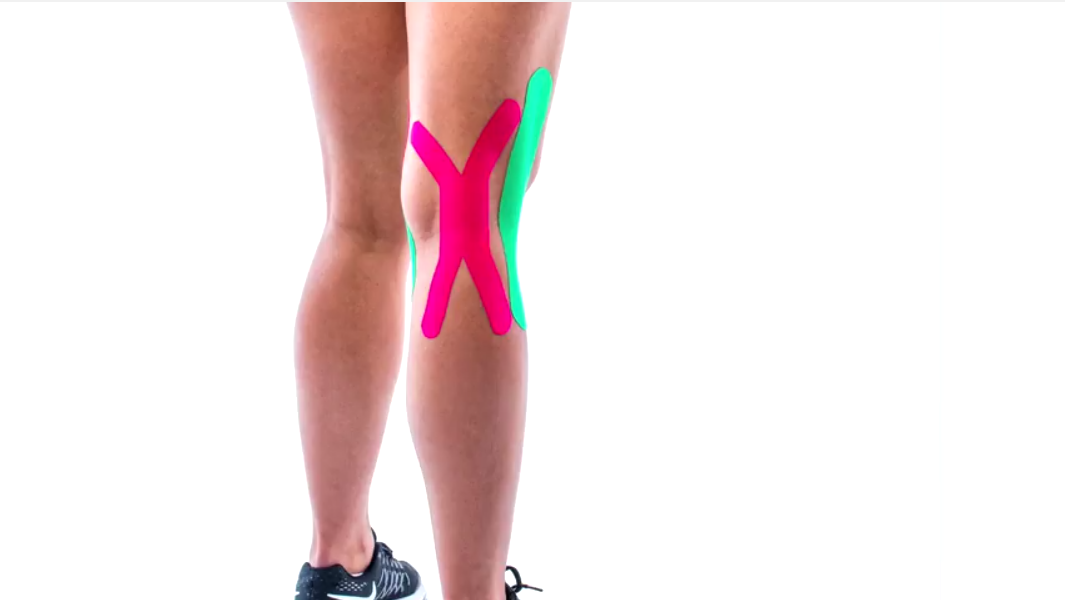

Christina’s advice when taping your knee
When taping your knee, it’s crucial to choose a tape that provides strong adhesion and support. That’s why I recommend CureTape kinesiology tape. For regular use, CureTape Classic or Art is ideal. However, if you are being very active and move around a lot, opt for the extra sticky CureTape Sports variant!
Learn how to tape
- The Ultimate Taping Guide: Focuses on self-taping for the 30 most common injuries where taping provides support.
- Kinesiology Taping Method Manual: Designed for (para medical) professionals, covering basic taping techniques and various pathologies.
- Decompressive Taping Techniques Manual: Specifically focuses on lymphatic taping methods for decompression.
What are you waiting for? Order a copy today!
THYSOL is the manufacturer of the kinesiology tape brand CureTape. As CureTape, we have been training and supplying professionals for 25 years. And consumers now know how to find us too! By manufacturing all our tapes in our own factory, we can guarantee the best quality!
Please note that the indicated tape applications and information on our website about the possibilities with kinesiology tape have not yet been scientifically proven. The statements and examples mentioned are based on long-term experiences of patients and trained therapists.Contraindications not to tape: pregnancy, open wounds, broken bones, unexplained complaints, allergies and skin diseases, use of medication such as blood thinners, thrombosis and fever. Always apply tape in consultation with a specialist.

